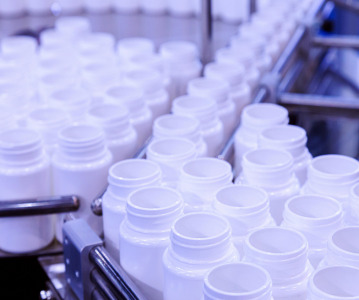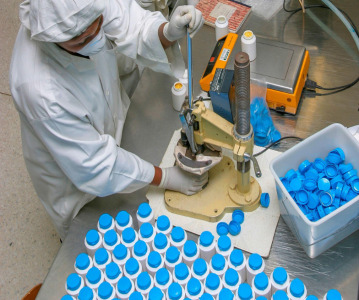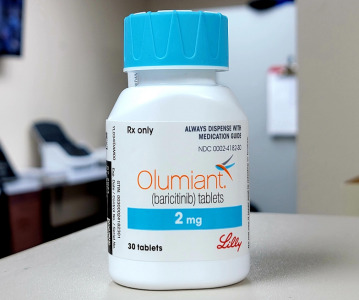New syringe technology could make the 'uninjectable' injectable
.jpg)
Researchers have designed a simple, low-cost device for subcutaneous injection of viscous formulations.
MIT researchers have developed a simple, low-cost technology to administer powerful drug formulations that are too viscous to be injected using conventional medical syringes.
The technology makes it possible to inject high-concentration drugs and other therapies subcutaneously. It was developed as a solution for highly effective, and extremely concentrated, biopharmaceuticals, which typically are diluted and injected intravenously.
“Where drug delivery and biologics are going, injectability is becoming a big bottleneck, preventing formulations that could treat diseases more easily,” said Kripa Varanasi, MIT professor of mechanical engineering. “Drug makers need to focus on what they do best, and formulate drugs, not be stuck by this problem of injectability.”
Researchers designed a system that would make subcutaneous injection of high-concentration drug formulations possible by reducing the required injection force, which exceeded what is possible with manual subcutaneous injection with a conventional syringe.
In their system, the viscous fluid to be injected is surrounded with a lubricating fluid, easing the fluid’s flow through the needle. With the lubricant, just one-seventh of the injection force was needed for the highest viscosity tested, effectively allowing subcutaneous injection of any of the more than 100 drugs otherwise considered too viscous to be administered in that way.
Because of their high viscosities, administering the drugs subcutaneously has involved methods that have turned out to be impractical and expensive.
Therapeutic gels — used in bone and join therapies, as well as for timed-release drug delivery, among other uses — could also be more easily administered using the syringe developed by the researchers.
Varanasi concluded: “There should be no reason why this approach, given its simplicity, can’t help solve what we’ve heard from industry is an emerging problem,” he says. “The foundational work is done. Now it’s just applying it to different formulations.”
Related News
-
News Women in Pharma: Moving beyond discussions and into best practice at CPHI Milan
In this second CPHI Milan special of our monthly series, we cover the key takeaways from the Diversity & Wellbeing track held on October 10, 2024. -
News AstraZeneca invests in AI collaboration for cancer drug trials
The British-Swedish pharmaceutical giant is partnering with biotechnology firm Immunai Inc to increase the efficiency of some cancer drug trials. -
News Ozempic and Wegovy prices questioned as Novo Nordisk faces US Senate hearing
The CEO of Novo Nordisk was grilled during a US Senate committee hearing on September 24, 2024, in which the exorbitant prices of the Danish company’s blockbuster drugs Ozempic and Wegovy were called into question. -
News The BIOSECURE Act: implications for the pharma supply chain
On September 9, 2024, the US House of Representatives voted to pass the bill titled the BIOSECURE Act (the Act), which lists several Chinese companies in the pharmaceutical supply chain. The Act will prohibit American companies from contracting or doin... -
News On Track at CPHI Milan: Thermo Fisher Scientific Track Sponsor interview
With CPHI Milan just around the corner, we sat down with some of the sponsors for this year’s conference tracks to discuss the most pressing topics in pharma. -
News CPHI Milan Speaker Spotlight: Pharma Manufacturing and Localisation in Africa
In the run-up to CPHI Milan, we sit down with some of the experts and thought-leaders speaking at this year’s conferences. -
News US BIOSECURE Act passed by US House of Representatives
The controversial act, which has already impacted several foreign companies operating in the US, was passed by the House of Representatives on September 9, 2024. It is now headed for the US Senate before it can be signed into law by President Joe Biden... -
News Eli Lilly licenses rheumatoid arthritis manufacturing in Africa
American pharmaceutical company Eli Lilly has signed a partnership with Egyptian organisation Eva Pharma to localise manufacturing of rheumatoid arthritis treatments in Africa.
Position your company at the heart of the global Pharma industry with a CPHI Online membership
-
Your products and solutions visible to thousands of visitors within the largest Pharma marketplace
-
Generate high-quality, engaged leads for your business, all year round
-
Promote your business as the industry’s thought-leader by hosting your reports, brochures and videos within your profile
-
Your company’s profile boosted at all participating CPHI events
-
An easy-to-use platform with a detailed dashboard showing your leads and performance

.png)





